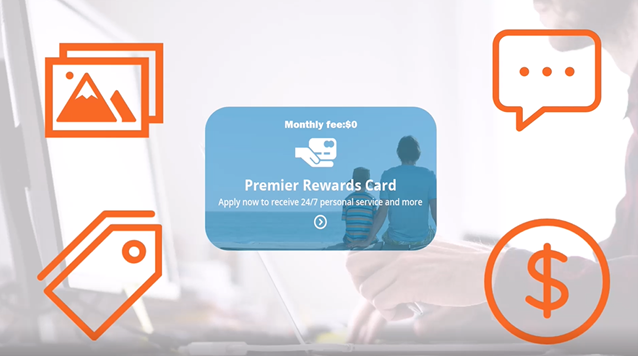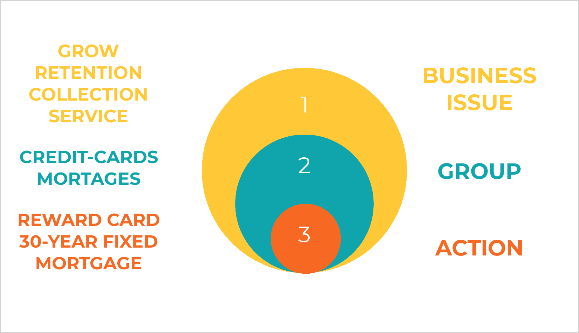
Action hierarchy
Customer action introduction
In Pega Customer Decision Hub™, next-best-action customer recommendations can take many forms, such as a banner advertisement, a retention offer, or a service message. Learn how to recognize different types of actions in your organization and organize similar actions into action groups.
Customer actions in your organization
In Pega Customer Decision Hub, customer actions are the specific actions that the system or application can take based on customer interactions and decisions. These actions can include sending personalized messages, offers, recommendations, or any other form of engagement with the customer. The actions are determined by the decisioning capabilities of Customer Decision Hub, which utilize analytics, business rules, and customer data to make intelligent decisions and drive personalized customer experiences.
Consider the following scenarios in various channels: contact center, mobile, and web.
Scenario 1: Contact center: Upsell
A customer, Peter, has a subscription with a Telco company. A Customer Service Representative (CSR) calls Peter to encourage him to purchase an upgraded version of the subscription. This scenario is an upsell offer made in a contact center and is a valid customer action.
Scenario 2: SMS: Retention
A customer, Troy, doesn’t use his credit card that often anymore and has decided to cancel the contract with U+ Bank. The Bank sends him an SMS message with the discount retention offer. This scenario is a retention offer made on the mobile channel to retain a customer and is a valid customer action.
Scenario 3: Inbound-web: cross-sell
A customer, Arnold, searches for a new phone subscription on a Telco company website. He finds an advertisement for a monthly subscription with unlimited mobile internet and calls. This scenario is a banner advertisement on a website and is a valid customer action.
Customer action properties
Every customer action has properties that define its characteristics. For example, a banner advertisement on a website usually consists of several elements, which help customers quickly understand the offer.
Image represents the visualization that is used for the banner. Price is a numeric property that represents the price of the customer action. Benefit represents the value proposition to the customer. Short title is a property that represents a short description of the customer action.
Business hierarchy
In Pega Customer Decision Hub, customer actions apply to various business issues and are organized into a three-level hierarchy. The business issue is the purpose of the actions that you offer to your customers. Each action that you prepare for your customers is associated with an issue and a group. Because of the association, you must always define the hierarchy before creating actions.
In Pega Customer Decision Hub, a Business Issue represents the business area for which a customer action is applicable (for example, Grow, Retention, Collections, and Service), a Group organizes actions into logical categories (for example, Credit Cards or Mortgages), and an offer, which is referred to as an Action (for example, a Reward card or 30-year fixed rate).
Each action that you prepare for your customers is associated with an issue and a group.
You have reached the end of this video. What did it show you?
- What are the customer actions in Customer Decision Hub.
- What are the customer action properties.
- Business hierarchy in Customer Decision Hub.
This Topic is available in the following Modules:
If you are having problems with your training, please review the Pega Academy Support FAQs.
Want to help us improve this content?




